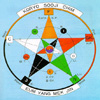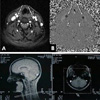Abstract
Acupuncture is an important portion of Complimentary and Alternative Medicine and has been applied widely, but understanding of acupuncture is not complete, a steady progress has been made in recent years with modernized techniques. The controversies of acupuncture should be defined through scientific evidence. There are a lot of problems for application of acupuncture in practice and research, such as, in the diagnosis, therapy and evaluation of acupuncture. We need standardized tools and scientific methods for diagnosis and treatment. It is an essential key to refine the effect of acupuncture and to prove the mechanisms. We should have basic concepts of acupuncture and apply it objectively for promotion of health and prevention of illness and treatment of disease as mentioned in Medical Acupuncture. Korean Hand Acupuncture Therapy (KHT) has many advantages for this purpose. It was found and developed in 1971 and since has been widely used in the world. KHT is easy to learn and to practice without side effect. The important concept of health in KHT is defined as the harmonized state of cerebral circulation which consists of anterior and posterior circulation. Disease and dysfunction result from imbalance of the anterior and posterior circulation. We present the basic concept of KHT and some studies to prove the mechanism of acupuncture using thermograph, transcranial Doppler and fMRI. We need a standard research protocol of acupuncture. KHT can be a good candidate for this purpose. KHT fulfills the requirements such as role, theory, diagnosis, treatment and evaluation and study.
Figures and Tables
 | Fig. 1Relationships between Eum (yin) and Yang; liver and gallbladder; heart and small intestine (pericaridium and triple warmer); spleen and stomach; lung and larger intestine; kidney and urinary bladder, and correlation of five elements of live, heart, spleen, lung and kidney or gallbladder, small intestine, stomach, large intestine and urinary bladder. |
 | Fig. 2This sheet shows Korean Hand Acupuncture Point and Micromeridian. There are 14 micromeridians and 403 acupuncture points on the hand (Adapted from reference 29). |
 | Fig. 3
A) Corresponding experiment was performed with KHT pellet on A-28 and KHT acupuncture needle on A-24 and checked the change of temperature on the nose and neck in 2, 5, 7 and 10 minutes (above). B) Corresponding experiment was done with dry ice on A-8 and the change of temperature in the umbilicus was noted (below). |
 | Fig. 4AThe newly developed hold frame was used to check the blood flow velocities in several arteries continuously and simultaneously (Lee PH frame maker: Handok Medical Company). |
 | Fig. 4BFour vessels were recorded at left vertebral (Ch 1), right vertebral (Ch 2), left carotid (Ch 3) and left radial artery (Ch4) using EME Transcranial Doppler to Park 0 0 diagnosed as migraine headache. The acupuncture treatment was done at E8 and I2 of Korean Hand Acupuncture Points. |
 | Fig. 5Axial MR image of the neck at the level of cervical 4th spine with fast low angle shot sequence. Flow-compensated image is shown in (A) and flow-encoding image is in (B). Regions of interest are manually drawn in each common carotid artery (long arrows) and the vertebral artery (short arrows) in both sides. Flow velocity and flow volume were calculated automatically by the MR machine soft ware. |
References
1. NIH Consensus Development Program. Acupuncture. Accessibility verified November 11, 2008. http://consensus.nih.gov/1997/1997Acupuncture107htm.
2. Park KH. Brain activation with Korean Hand acupuncture. 2000. Shindonga;434–441.
3. Litscher G. Computer-based quantification of traditional Chinese-, ear- and Korean hand acupuncture: needle-induced changes of regional cerebral blood flow velocity. Neurol Res. 2002. 24:377–380.

4. Boehler M, Mitterschiffthaler G, Schlager A. Korean hand acupressure reduces postoperative nausea and vomiting after gynecological laparoscopic surgery. Anesth Analg. 2002. 94:872–875.

5. Schlager A, Boehler M, Puhringer F. Korean hand acupressure reduces postoperative vomiting in children after strabismus surgery. Br J Anaesth. 2000. 85:267–270.

7. Yoo TW. Comparative studies between Seo Geum Medicine and Oriental Medicine. http://www.koryohandtherapy.com/.
8. Linde K, Streng A, Jurgens S, Hoppe A, Brinkhaus B, Witt C, Wagenpfeil S, Pfaffenrath V, Hammes MG, Weidenhammer W, Willich SN, Melchart D. Acupuncture for patients with migraine: a randomized controlled trial. JAMA. 2005. 293:2118–2125.
9. Linde K, Allais G, Brinkhaus B, Manheimer E, Vickers A, White AR. Acupuncture for tension-type headache. Cochrane Database Syst Rev. 2009. (1):CD007587.

10. Linde K, Allais G, Brinkhaus B, Manheimer E, Vickers A, White AR. Acupuncture for migraine prophylaxis. Cochrane Database Syst Rev. 2009. (1):CD001218.

11. Alecrim-Andrade J, Maciel-Júnior JA, Cladellas XC, Correa-Filho HR, Machado HC. Acupuncture in migraine prophylaxis: a randomized sham-controlled trial. Cephalalgia. 2006. 26:520–529.
12. Diener HC, Kronfeld K, Boewing G, Lungenhausen M, Maier C, Molsberger A, Tegenthoff M, Trampisch HJ. GERAC Migraine Study Group. Efficacy of acupuncture for the prophylaxis of migraine: a multicentre randomised controlled clinical trial. Lancet Neurol. 2006. 5:310–316.

13. Cho ZH, Chung SC, Jones JP, Park JB, Park HJ, Lee HJ, Wong EK, Min BI. New findings of the correlation between acupoints and corresponding brain cortices using functional MRI. Proc Natl Acad Sci U S A. 1998. 95:2670–2673. Retraction in: Cho ZH, Chung SC, Lee HJ, Wong EK, Min BI. Proc Natl Acad Sci U S A. 2006;103:10527.

14. Litscher G, Wang L, Wiesner-Zechmeister M. Specific effects of laserpuncture on the cerebral circulation. Lasers Med Sci. 2000. 15:57–62.

15. Litscher G, Schikora D. Cerebral Vascular Effects of Non-invasive Laser needles Measured by Transorbital and Transtemporal Doppler Sonography. Lasers Med Sci. 2002. 17:289–295.

16. Oishi K, Ikeda T, Watanabe K, Senba M, Suga K, Nagatake T. A fatal case of streptococcal toxic shock-like syndrome probably caused by acupuncture. Kansenshogaku Zasshi. 1998. 72:776–780.

17. Yamashita H, Tsukayama H, Tanno Y, Nishijo K. Adverse events related to acupuncture. JAMA. 1998. 280:1563–1564.

19. Wu MT, Hsieh JC, Xiong J, Yang CF, Pan HB, Chen YC, Tsai G, Rosen BR, Kwong KK. Central nervous pathway for acupuncture stimulation: localization of processing with functional MR imaging of the brain--preliminary experience. Radiology. 1999. 212:133–141.

20. Buckner RL. The hemodynamic inverse problem: Making inferences about neural activity from measured MRI signals. Proc Natl Acad Sci U S A. 2003. 100:2177–2179.

21. Hui KK, Liu J, Makris N, Gollub RL, Chen AJ, Moore CI, Kennedy DN, Rosen BR, Kwong KK. Acupuncture modulates the limbic system and subcortical gray structures of the human brain: evidence from fMRI studies in normal subjects. Hum Brain Mapp. 2000. 9:13–25.

22. Dhond RP, Kettner N, Napadow V. Neuroimaging acupuncture effects in the human brain. J Altern Complement Med. 2007. 13:603–616.

23. Hsieh JC, Tu CH, Chen FP, Chen MC, Yeh TC, Cheng HC, Wu YT, Liu RS, Ho LT. Activation of the hypothalamus characterizes the acupuncture stimulation at the analgesic point in human: a positron emission tomography study. Neurosci Lett. 2001. 307:105–108.

24. Uchida S, Kagitani F, Suzuki A, Aikawa Y. Effect of acupuncture-like stimulation on cortical cerebral blood flow in anesthetized rats. Jpn J Physiol. 2000. 50:495–507.

25. Litscher G. Ten Years Evidence-based High-Tech Acupuncture– A Short Review of Centrally Measured Effects* (Part II). Evid Based Complement Alternat Med. 2009. 6:305–314.

26. Koryo Hand Therapy Web site. Accessibility verified Novmeber 11.2008. http://www.soojichim.com/new/eng/fu-05.htm.
27. Yoo TW. Korean Hand Therapy. 2009. 12th ed. Seoul, Korea: Eum Yang Maek Jin Publishing Co..
28. Yoo TW. Yin Yang Pulse Diagnosis & Tonification and Sedation. 1994. Seoul: Eum Yang Maek Jin Publishing Co..
29. Yoo TW. Seogeum Therapy. 2009. 2nd ed. Seoul, Korea: Eum Yang Maek Jin Publishing Co..
30. Park KH, Yoo TW. Useful method to confirm tender points of primary headache: Corresponding points of Koryo Hand Acupuncture Therapy. Internet J Altern Med. 2005. 3(1):

31. Park KH, Joo H, Kim DS, Jung DS, Yoo TW. Where are pain localizations in migraineurs? localization of pain in head, shoulder and abdomen in migraineurs. J Korean Pain Res Soc. 2003. 13:81–85.
32. Kara SA, Erdemoglu AK, Karadeniz MY, Altinok D. Color Doppler sonography of orbital and vertebral arteries in migraineurs without aura. J Clin Ultrasound. 2003. 31:308–314.

33. Litscher G, Rachbauer D, Ropele S, Wang L, Schikora D, Fazekas F, Ebner F. Acupuncture using laser needle modulates brain function: first evidence from functional transcranial Doppler sonography and functional magnetic resonance imaging. Lasers Med Sci. 2004. 19:6–11.
34. Park KH, Yoo TW. The Change Of Cerebral Blood Flow Before And After Treatment Of Koryo Hand Therapy. Internet J Altern Med. 2001. 1(1):

35. Park KH, Yoo TW. Relieving Migraine Headache by Regulating Cerebral Blood Flow with Koryo Hand Therapy. Internet J Altern Med. 2001. 1(1):

36. Park KH, Park KP, Shin JH, Jung TW. Migraine Headache and Cerebral Circulation. J Korean Pain Res Soc. 2006. 16:93–98.
37. Park KH, Kim HJ, Baek SY, Cho BM, Yoo TW. Effect of Acupuncture on Blood Flow Velocity and Volume in Common Carotid and Vertebral Arteries in Migraine Patients. Med Acupunct. 2009. 21:47–54. (http://www.liebertonline.com/toc/acu/21/1).

38. Macchi C, Lova RM, Miniati B, Gulisano M, Pratesi C, Conti AA, Gensini GF. The circle of Willis in healthy older persons. J Cardiovasc Surg (Torino). 2002. 43:887–890.
39. Macchi C, Molino Lova R, Miniati B, Gulisano M, Pratesi C, Conti AA, Gensini GF. Relationship between the calibre of carotid arteries and the configuration of the circle of Willis in healthy older persons. J Cardiovasc Surg (Torino). 2003. 44:231–236.
40. von Büdingen HC, Staudacher T, von Büdingen HJ. Ultrasound diagnostics of the vertebrobasilar system. Front Neurol Neurosci. 2006. 21:57–69.

41. Hendrikse J, Hartkamp MJ, Hillen B, Mali WP, van der Grond J. Collateral ability of the circle of Willis in patients with unilateral internal carotid artery occlusion: border zone infarcts and clinical symptoms. Stroke. 2001. 32:2768–2773.

42. Cho ZH, Hwang SC, Wong EK, Son YD, Kang CK, Park TS, Bai SJ, Kim YB, Lee YB, Sung KK, Lee BH, Shepp LA, Min KT. Neural substrates, experimental evidences and functional hypothesis of acupuncture mechanisms. Acta Neurol Scand. 2006. 113:370–377.

43. Yoo TW. Gold Meridian Therapy. 2009. Seoul, Korea: Eum Yang Maek Jin.




 PDF
PDF ePub
ePub Citation
Citation Print
Print









 XML Download
XML Download